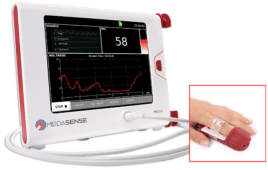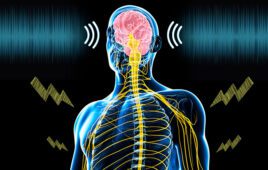Mobile medicine is helping chronic pain patients cope with and manage their condition thanks to new smartphone apps, which can track patients from a distance and monitor pain, mood, physical activity, drug side effects, and treatment compliance.
According to Robert Jamison, PhD, professor of anesthesia and psychiatry at Harvard Medical School and pain psychologist with Brigham and Women’s Hospital, smartphone apps are helping the shrinking ranks of pain specialists treat and monitor rapidly increasing populations of chronic pain sufferers. “Today the ratio is one pain specialist for every 10,000 patients, but mobile technology allows for easy time-effective coverage of patients at a low cost, offering significant opportunities to improve access to health care, contain costs, and improve clinical outcomes,” Jamison explained.
At the American Pain Society annual meeting, Jamison presented results of his research on smartphone apps, developed at Brigham and Women’s, for monitoring pain patients. He found that internet-based cognitive behavioral therapy could significantly decrease pain levels, improve function, and decrease costs compared to standard care.
“Online networks, for example, can promote communication, distraction, information sharing, self expression and social support,” Jamison said. “We also believe online networks decrease feelings of withdrawn behavior and instill a greater willingness to return for treatment.”
Jamison added that electronic diaries maintained by patients are more effective than paper diaries for evaluating pain levels, daily activities, treatment compliance and mood.
Jamison said that while few studies have been conducted on text messaging as a pain management tool, texting has proven to be effective for managing patients with diabetes, hypertension, asthma, smoking cessation and weight loss.
In his ongoing research, Jamison is studying 60 patients with chronic cancer and non-cancer pain who use a pain management smartphone app. “We hypothesized that the pain management smartphone app will help providers track patients and reduce emergency department visits and hospitalizations by 50 percent,” said Jamison.
A key feature of the pain management app is daily pain tracking in which patients are asked five questions about their pain, activity interference, sleep, mood, and overall status on a sliding scale of 1 to 10, and compare these with baseline ratings. Should pain ratings significantly increase from baseline or reach 9 or 10, the patient gets an immediate response that the pain specialist has been contacted.
“The pain management smartphone app can deliver non-pharmacological, cognitive behavioral treatment as well as prompt patients to stay active, comply with therapy, and develop pain coping skills,” Jamison reported. He added that the smartphone data can be summarized and transmitted every day into the patient’s electronic medical record.
Jamison noted that the average response rate to text messages to pain patients is 70 to 90 percent and that high responders show improved pain levels.




